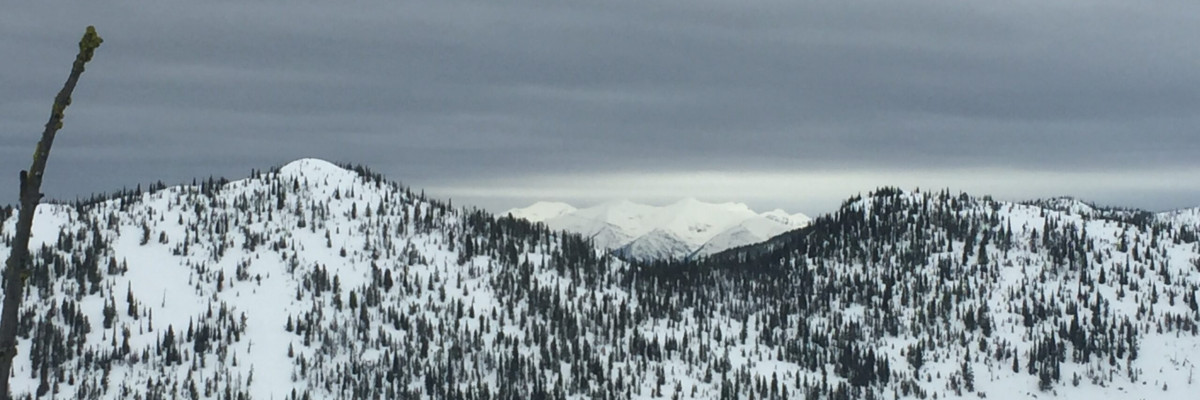The current avalanche danger is Moderate for the west central Montana backcountry. Small human triggered avalanches in specific areas and larger avalanches in isolated terrain are possible.
Good morning, this is Logan King with the West Central Montana Avalanche Center’s avalanche advisory for Thursday, March 31st, 2016. This danger rating does not apply to operating ski areas, expires at midnight tonight and is the sole responsibility of the U.S. Forest Service.
Weather and Snowpack
A Canadian cold front is working its way into the region and will bring cooler temperatures and light snow before warming for the weekend. As of 5am this morning a trace to 2 inches of snow have been recorded in the advisory area. Winds at Point 6 are currently 18 gusting to 29 from the north and mountain temperatures are hovering just above freezing.
Tim and I were in the Rattlesnake yesterday and found favorable skiing conditions on shaded aspects with all other aspects developing a new surface crust. We also found the primary avalanche concern to be windslabs. The windslabs are small and thin but can be found on all aspects above 6,500ft as strong winds were seen out of the E for the last few days and prevailing winds were from the W prior to that. Carefully evaluate terrain for signs of wind effect to determine if windslabs are present and reactive.
The secondary avalanche concern will be loose snow avalanches, which will be fairly widespread on steep terrain (>35degres). The loose snow will be dry on shaded aspects and wet on solar affected aspects. Carefully assess the consequences of even a small slide and avoid terrain traps.
Lastly there is still a concern over persistent slabs. Earlier this week near Lolo facets above a crust were propagating on Eastern aspects and Tim and I found them on a SE aspect in the Rattlesnake yesterday. They were not propagating in the Rattlesnake but were producing nice Q1 sheers. The facets seem to be most prominent on solar affected aspects and will be reactive in isolated areas so dig and do stability tests to determine if they are present and readily propagating.
Weather and Avalanche Outlook
As the Canadian cold front moves through the region sparse light snow will be seen periodically. Following the cold front temperatures will climb again and conditions look to be high and dry for the weekend. With no significant changes in the forecast, avalanche hazard will remain the same through today. As warm sunny weather sets in conditions may change rapidly leading into the weekend and wet slabs and cornice failures may become a concern.
Ski and ride safe, the next regularly scheduled advisory will be issued on Saturday.
























